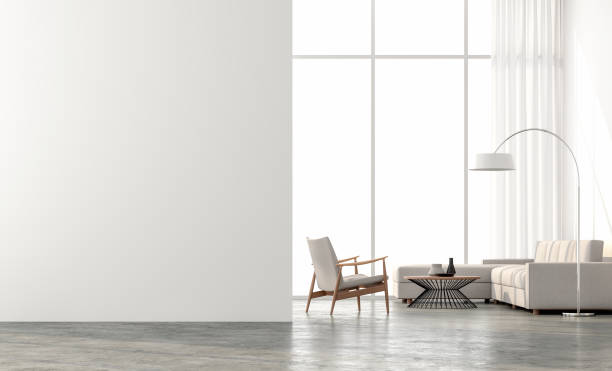Maximizing Small Living Rooms: Design Tricks for Spacious Feel
The challenge of making a small living room feel spacious and inviting has long been a concern for urban dwellers and those with compact homes. As cities become more densely populated and housing costs rise, many people find themselves grappling with limited square footage. However, the constraints of a small living room need not limit its potential for comfort and style. Interior designers and homeowners have developed numerous strategies to create the illusion of space while maintaining functionality. These techniques range from clever furniture arrangements to strategic use of color and light. By employing these design tricks, even the coziest of living rooms can be transformed into seemingly larger, more open spaces that welcome relaxation and social gatherings.

The Power of Light Colors
One of the most effective ways to make a small living room appear more spacious is through the use of light colors. Pale hues reflect light, making walls appear to recede and creating an airy atmosphere. White is a classic choice, but soft pastels and light neutrals can also work wonders. To maximize this effect, consider painting the ceiling the same color as the walls or even a shade lighter. This technique blurs the boundaries between surfaces, giving the impression of higher ceilings and a more open space.
Strategic Furniture Placement
The arrangement of furniture plays a crucial role in the perception of space in a small living room. Pushing all furniture against the walls, a common instinct, can actually make the room feel cramped. Instead, try floating larger pieces like sofas slightly away from the walls. This creates the illusion of more space behind the furniture. Additionally, choosing furniture with exposed legs allows light to flow underneath, contributing to a sense of openness. Multi-functional pieces, such as ottomans with storage or nesting tables, can help reduce clutter and maximize floor space.
Mirrors and Reflective Surfaces
Mirrors have long been a designer’s secret weapon for expanding small spaces visually. A large mirror placed opposite a window can dramatically increase the amount of natural light in the room while creating the illusion of depth. Beyond traditional mirrors, consider incorporating reflective surfaces throughout the space. Glass coffee tables, metallic accents, and glossy finishes on furniture can all contribute to a brighter, more open feel. These reflective elements bounce light around the room, making it appear larger and more dynamic.
Vertical Space Utilization
When floor space is at a premium, it’s essential to make use of vertical real estate. Floor-to-ceiling bookshelves or built-in storage units draw the eye upward, creating the impression of higher ceilings. Tall, narrow furniture pieces can provide necessary storage without eating up too much floor space. Hanging curtains close to the ceiling and extending them beyond the window frame can make windows appear larger and ceilings higher. Additionally, incorporating vertical stripes in wallpaper or textiles can elongate the walls visually.
Lighting Techniques
Proper lighting is crucial in making a small living room feel more spacious. Layered lighting, combining ambient, task, and accent lights, can create depth and dimension. Avoid relying solely on a central ceiling fixture, which can make the room feel flat. Instead, incorporate a variety of light sources at different heights. Wall sconces, table lamps, and floor lamps can illuminate dark corners and create a sense of depth. Consider using uplighting to wash walls with light, further expanding the perceived space.
Scale and Proportion
Choosing furniture that is proportionate to the room’s size is essential. Oversized sofas or bulky armchairs can overwhelm a small space. Opt for streamlined, low-profile furniture that doesn’t visually clutter the room. However, don’t fall into the trap of using only small pieces, as this can make the room feel cluttered. A few larger statement pieces, when chosen carefully, can actually make the space feel grander. The key is to maintain a balance and ensure there’s enough negative space around furniture to allow the eye to rest.
Cohesive Color Scheme
While light colors are generally recommended for small spaces, a cohesive color scheme throughout the room can also create a sense of expansiveness. Monochromatic color schemes, where different shades and tones of the same color are used, can make a space feel larger and more unified. If you prefer more color, consider using a limited palette of two or three complementary hues throughout the room. This approach creates visual continuity and prevents the space from feeling choppy or disjointed.
Transparent Furniture
Incorporating transparent or translucent furniture pieces can significantly impact the perceived spaciousness of a small living room. Glass coffee tables, acrylic chairs, or lucite console tables allow light to pass through, reducing visual clutter. These pieces provide necessary function without adding visual weight to the room. When combined with other space-expanding techniques, transparent furniture can contribute to a light, airy atmosphere that feels much larger than the room’s actual dimensions.
In conclusion, transforming a small living room into a space that feels open and inviting is achievable through thoughtful design choices. By leveraging light colors, strategic furniture placement, reflective surfaces, and clever lighting, even the most compact spaces can be made to feel expansive. The key lies in understanding how visual perception can be manipulated through design elements. As urban living continues to trend towards smaller spaces, these techniques become increasingly valuable. Homeowners and designers alike can use these strategies to create living rooms that are not only functional but also feel spacious and welcoming, proving that limited square footage need not limit style or comfort.






